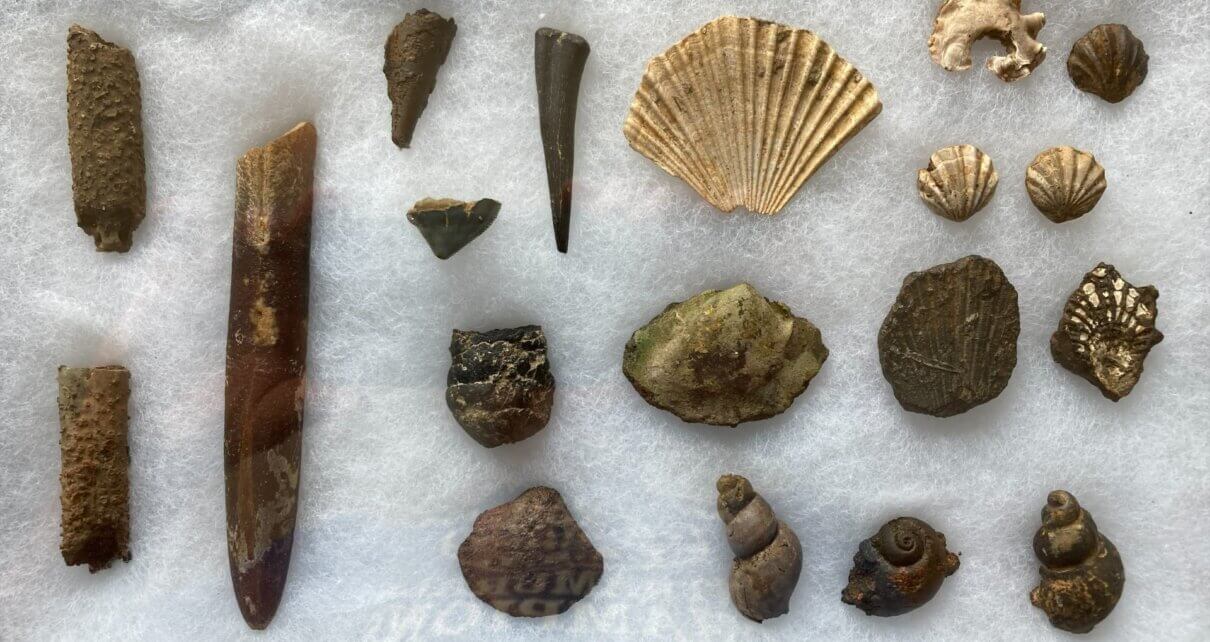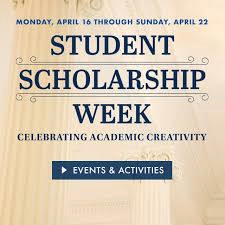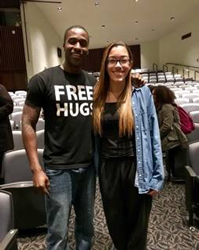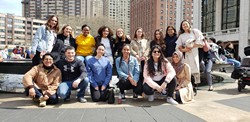The New Jersey State Museum recently added four 65 million-year-old turtle fossils found by Monmouth University Professor of Journalism John Morano to their collection. Dr. Dana Ehret, Curator of Natural History at the State Museum and adjunct faculty member in the University’s Department of Biology, explained that three of the four turtle fossils are peripheral bones (edge of the top turtle shell) from a turtle attributed to the estuarine genus Adocus, a rare taxon to recover in New Jersey.
The fourth fossil is a peripheral bone from Euclastes wielandi, a sea turtle. Dr. Ehret pointed out, “The museum does not have any turtle material in our collection from John’s locality.”
Morano discovered the specimens while collecting fossils in a tributary of Crosswicks Creek in western Monmouth County where some of the best Cretaceous fossils from the North Atlantic Coastal Plain can be found. Over the past 30 years, Morano has found thousands of fossils with several discoveries winding up in institutional collections.
“I wasn’t looking for these specific fossils,” Morano explained. “In fact, to find any vertebrate material, let alone two different turtles, is rare on top of rare. Frankly, I was shocked and delighted to find these fossils. I was fairly certain that I had turtle pieces right away. I had a sense of where they belonged on the animal’s anatomy, but I couldn’t place a specific species on the fossils. That’s where Dr. Ehret came in. Not only is he an extremely accomplished paleontologist, he’s an authority on turtles,” he said.
Morano continued, “Dr. Ehret and other paleontologists who oversee serious public collections are always free to look through my finds and take whatever is useful to science. Fossils that are kept in a shoebox under one’s bed might as well still be in the ground. Fossils are found to be preserved, shared and studied.”
Dr. Ehret elaborated, “Donations from avocational paleontologists are incredibly important! Most museums only have 1 or 2 paleontologists on staff if they are lucky. [They] don’t have the time to be out collecting every day, week or month. Contributions from avocational and amateur paleontologists who are out there collecting regularly are extremely important to our science.”
Carl Mehling, Senior Museum Specialist at the American Museum of Natural History, added, “In certain fossil-rich areas, like Monmouth County, NJ, the rarest things, and the most interesting and important to find and preserve, are the least likely to be found by the occasional expedition an academic could possibly conduct. It is only the relentless dedication to collecting that the best non-professionals exhibit that is going to rescue these extreme rarities.”
Dr. Ehret said, “I’ve known Prof. Morano for over 10 years. I’ve been fossil collecting with him and viewed many of the great fossil discoveries he’s made. I appreciate that he is very interested in nature and authors an Eco-Adventure book series that brings awareness to many threats that our planet is facing. The fact that John also works with multiple museums/collections and shares what he finds, as well as his knowledge, is extremely important.”
Mehling added, “Professor Morano is exactly the kind of non-professional paleontologist all academics would want to work with. We wish there were more like him: amiable, committed to collecting and in a scientifically useful way, extremely knowledgeable about the fossils he hunts as well as the sites they come from and their context, and wonderfully generous. He plays the game in a way that benefits everyone.”
Adocus was originally described by Joseph Leidy, the first paleontologist in the United States who worked at the Academy of Natural Sciences in Philadelphia. Dr. Ehret said that Leidy described Adocus from the “marl” or greensands of New Jersey and that the turtle inhabited nearshore areas like estuaries and back bays, growing to lengths of three feet.
Euclastes wielandi, according to Dr. Ehret, was about the size of a modern green turtle but had a large flat palate and mandible (mouth structure). The turtle was originally named by Edward Drinker Cope (of Philadelphia and Bone Wars fame) in 1867 based on specimens from New Jersey.
Dr. Ehret sees direct connections between information fossils can provide and, perhaps, gaining a better understanding of how climate change might impact environments and their inhabitants. “We know that the Earth is constantly changing… and understanding what thresholds nature can or can’t handle will be critical for the survival of our planet,” he said.
These “limits” that Dr. Ehret speaks of are often reflected through characteristics seen in the fossils themselves which can offer a glimpse into the effects of climate change, underscoring the
importance of discoveries and donations like Morano’s.
Morano concluded, “The preservation and study of fossils is important for a host of reasons. If you have an interest in evolution, this is the map. And, as Dr. Ehret mentioned, the study of fossils, formations, stratigraphy, can provide information about how environments and their forms of life managed drought, flood, heat, invasive species and other stresses, influences we happen to be facing right now. These relics from the distant past can have a lot to say about what’s happening today, or what might happen tomorrow.”




